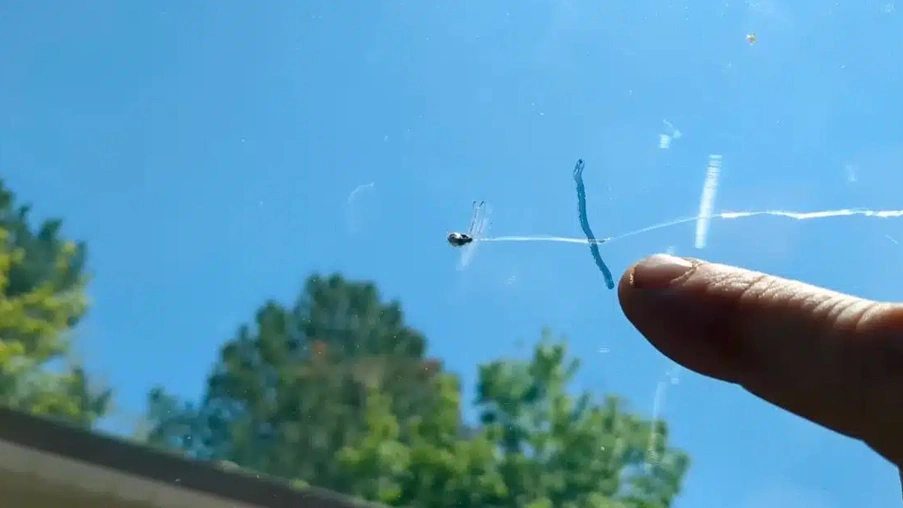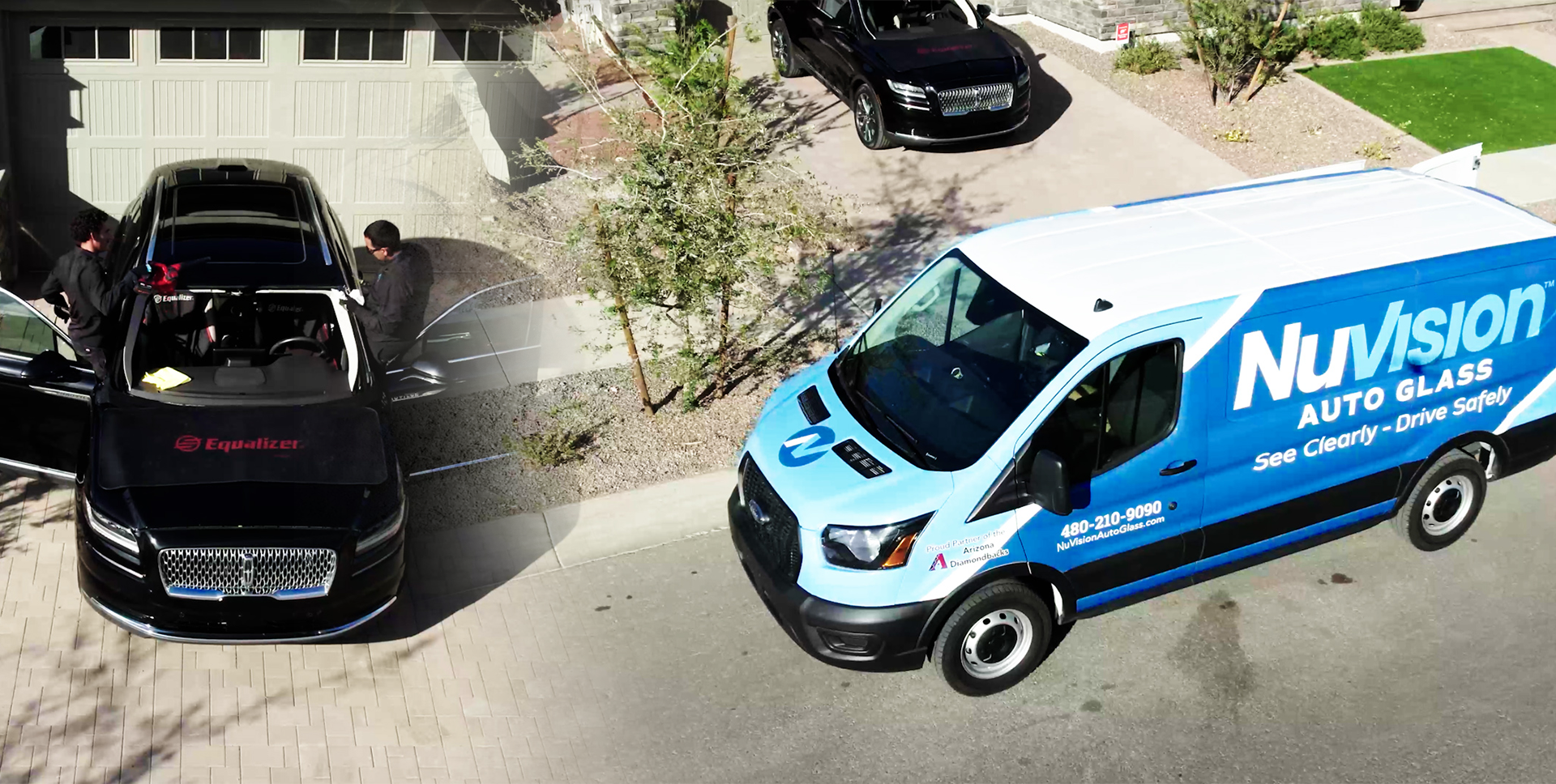Windshield Pit vs. Chip: Key Differences & Repair Guide

If you’re unsure whether that spot on your windshield is just a surface blemish or something more serious, you’re not alone. Many drivers wonder whether they’re dealing with a windshield pit or a chip, and more importantly, what to do next.
This guide will help you:
- Understand the difference between pits and chips
- Know when each type of damage can be repaired
- Learn when a full windshield replacement is the safer choice
- Get expert advice on maintenance and prevention
Whether you’re a daily commuter or a weekend road tripper, visibility and glass integrity are crucial for your safety, especially in vehicles equipped with ADAS (Advanced Driver Assistance Systems).
What Is a Windshield Pit?
A windshield pit is a shallow surface indentation caused by small debris like sand or grit hitting your windshield while you drive. These don’t break through the glass like chips do, but over time, multiple pits can scatter sunlight and increase glare, making it harder to see, especially during dawn, dusk, or nighttime driving.
Common causes of windshield pitting:
- Long-term highway driving behind trucks
- Exposure to sandstorms or dusty environments
- Frequent driving on unpaved or gravel roads
Risks of ignoring pits:
- Light distortion and glare
- Weakened glass surface over time
- Potential for spreading if left untreated
When is pit repair possible?
- The pit is small, shallow, and not in the driver’s direct line of sight
- There are only a few pits, and no major glass deterioration
- It does not interfere with ADAS sensors
In cases of heavy pitting, especially across a wide area, windshield replacement may be more effective than polishing or filling.
What Is a Windshield Chip?
A windshield chip happens when a rock or hard object strikes the glass hard enough to break off a small piece. Unlike pits, chips often go deeper into the windshield and may develop small cracks that grow over time.
Types of chips include:
- Bullseye: circular damage with a dark center
- Star break: cracks radiating outward
- Combination break: mix of bullseye and star
Common causes of windshield chips:
- Gravel kicked up by passing vehicles
- Hail damage
- Flying debris from construction sites
Why chips are more serious than pits:
- Chips can expand into full-length cracks
- Moisture, heat, or cold can worsen the damage
- Structural integrity of the windshield can be compromised
Repair vs. replace:
- Small chips (smaller than a quarter) can be fixed using resin injection
- Larger or spreading chips usually require full auto glass replacement
- If your vehicle has ADAS features, replacing the windshield will require ADAS calibration
Windshield Pit vs Chip: Key Differences at a Glance
| Feature | Windshield Pit | Windshield Chip |
|---|---|---|
| Cause | Long-term surface wear (sand, dust) | Sudden impact (rock, hail) |
| Depth | Surface-level only | Deeper, may form fractures |
| Spreading Risk | Low (unless widespread) | High; can turn into a crack |
| Impact on Vision | Minor glare, especially in sunlight | May distort visibility or crack further |
| Repair Method | Polishing or filling surface | Front: Max 25% reflective. Back: Max 35% reflective. |
| ADAS Calibration? | Not needed unless replacing glass | Required after replacement in ADAS vehicles |
When Should You Repair or Replace a Windshield?
Here’s how to decide whether a windshield pit or chip requires repair, or if it’s time for a full replacement:
Repair is possible when:
- The pit is shallow and not in the driver’s line of sight
- The chip is small, with no cracks spreading beyond a quarter-size diameter
- The damage is far from the ADAS sensor areas
Replacement is necessary when:
- Multiple pits are scattered across the windshield
- The chip has grown into a visible crack
- Damage is within the camera or sensor zone used by ADAS systems
How to Prevent Windshield Pits and Chips
Prevention is always cheaper than repair. Here are smart habits to reduce windshield damage:
- Maintain a safe following distance from trucks or gravel-hauling vehicles
- Avoid or drive slowly on unpaved or debris-prone roads
- Park in garages or shaded spots to reduce temperature swings
- Use a windshield sunshade or cover when parked
- Clean your windshield regularly to prevent the buildup of abrasive particles
- Inspect for minor damage often and repair it early
- Schedule expert repairs with a reputable auto glass company
Why ADAS Calibration Matters
If your vehicle has lane departure warnings, adaptive cruise control, or emergency braking features, replacing the windshield without proper ADAS calibration can render those safety systems inaccurate or useless.
That’s why NuVision Auto Glass includes full ADAS recalibration as part of its windshield replacement service. Your safety systems stay accurate and road-ready.
Final Thoughts: Don’t Ignore the Damage
Whether it’s a small pit or a fresh chip, any windshield damage affects your visibility and safety. Addressing the issue early on can save you money, protect your passengers, and avoid larger cracks that require full replacement.
Need help figuring out if repair is enough or if it’s time for a new windshield?
NuVision Auto Glass offers expert evaluations, fast mobile service, and free ADAS calibration with replacements in eligible cases.
FAQs
1. Is a chip or crack worse on a windshield?
Chips are typically easier to fix. Cracks tend to spread faster and usually require full windshield replacement.
2. How much does it cost to repair a windshield chip?
Small chip repairs typically range from $50 to $150, depending on the location and severity. Extensive cracks usually require full replacement.
3. Does insurance cover windshield damage?
Yes, most comprehensive auto insurance policies cover chip or crack repair, and in some states like Florida or Arizona, full replacement may be free with zero deductible. Be sure to confirm whether ADAS calibration is also included.

